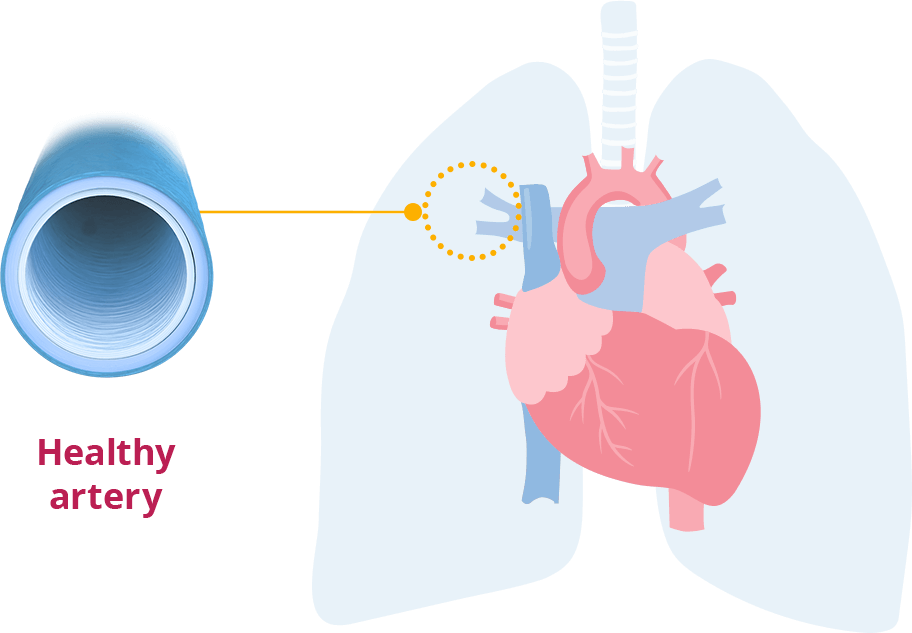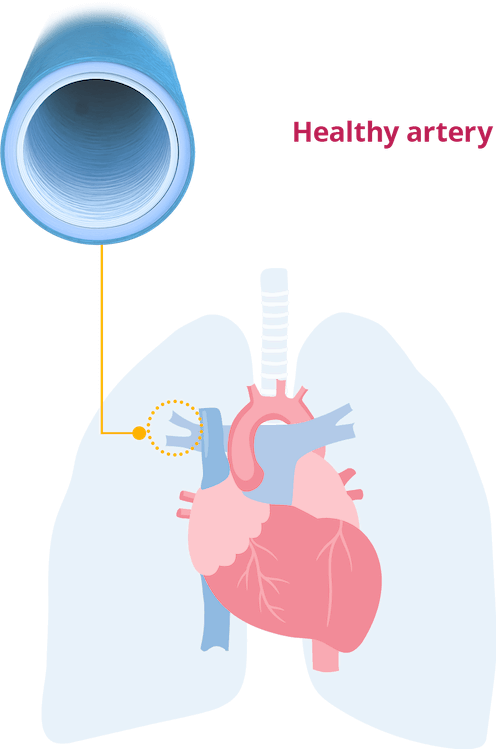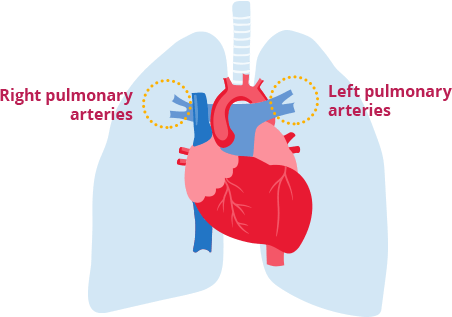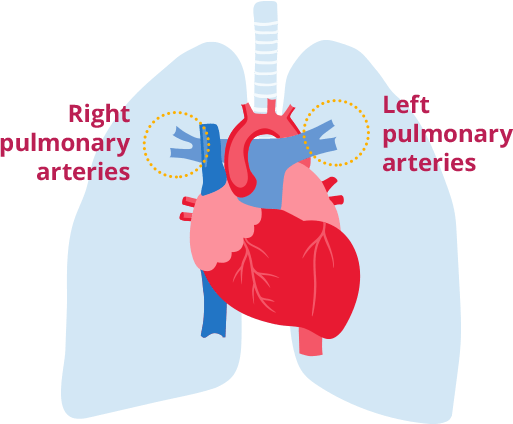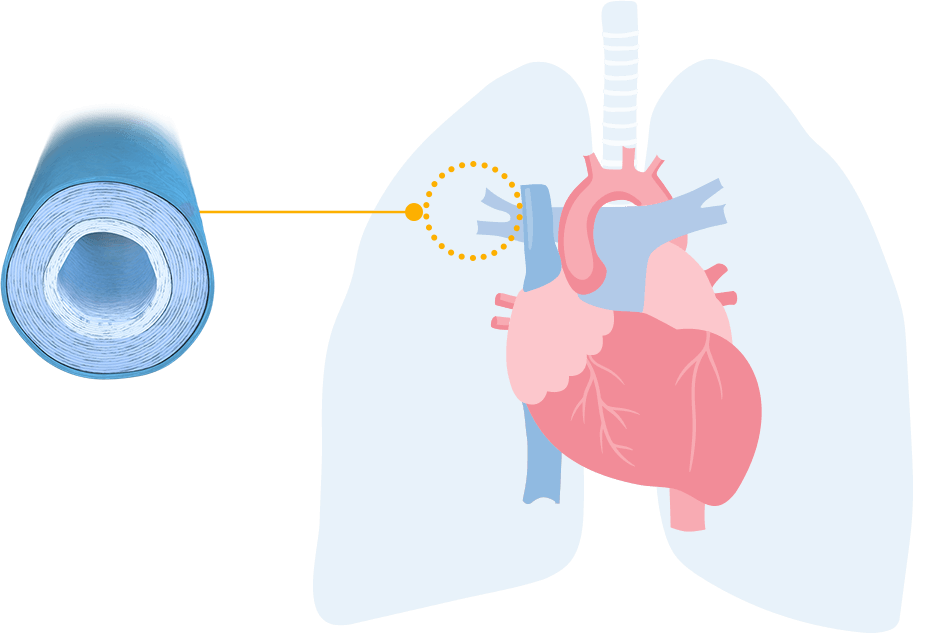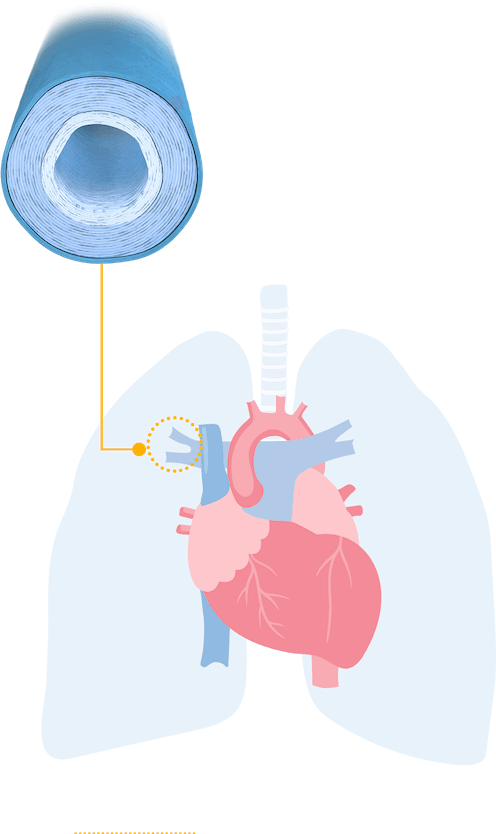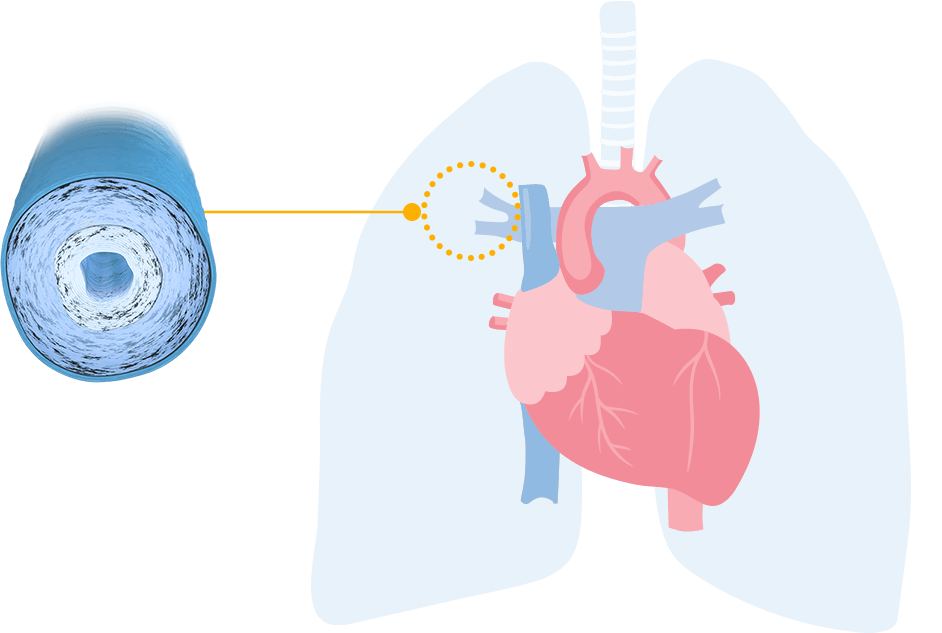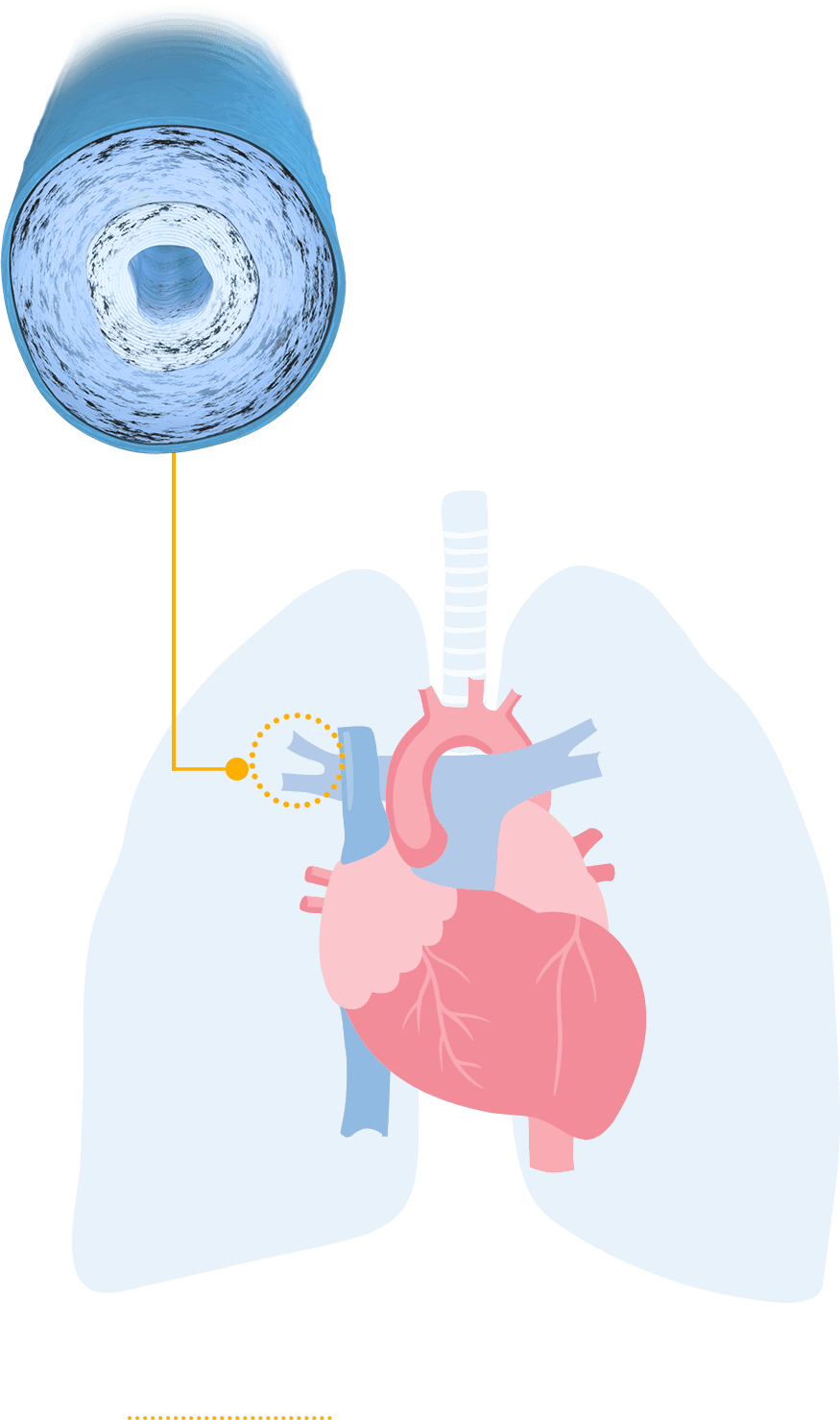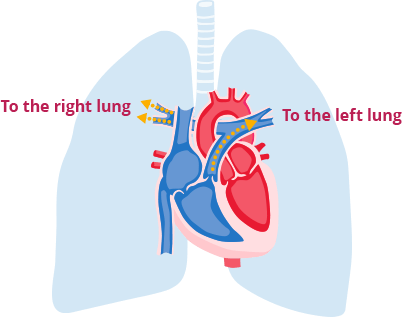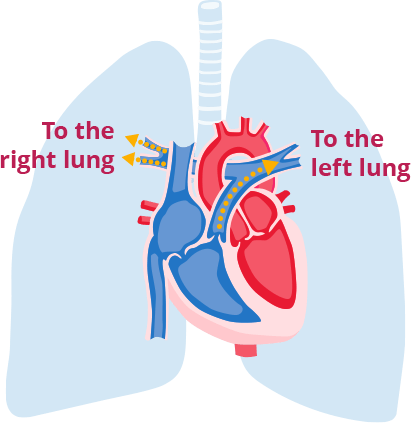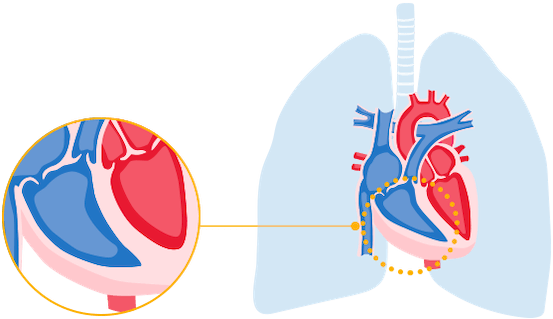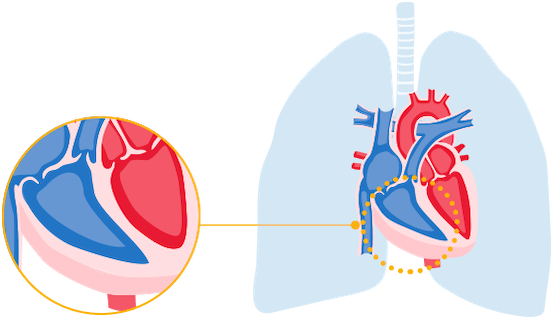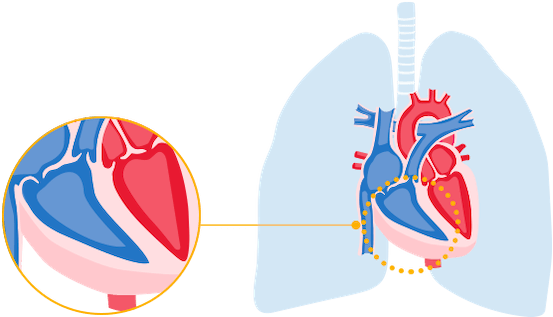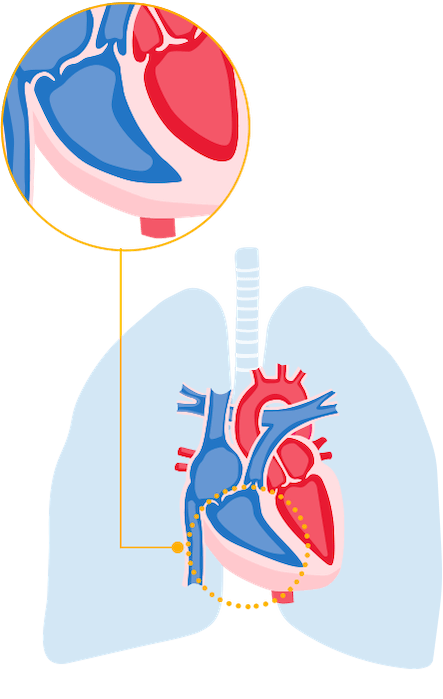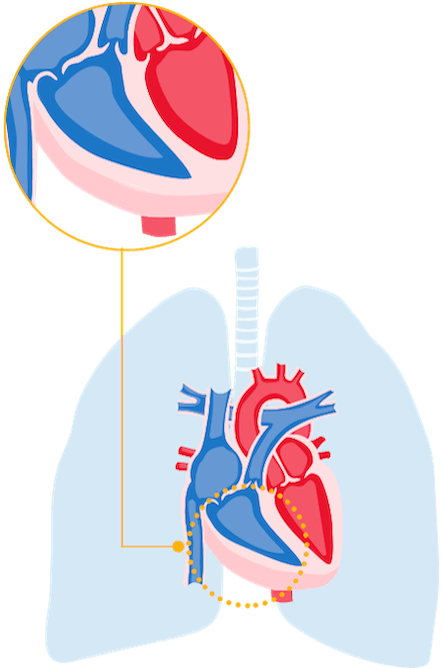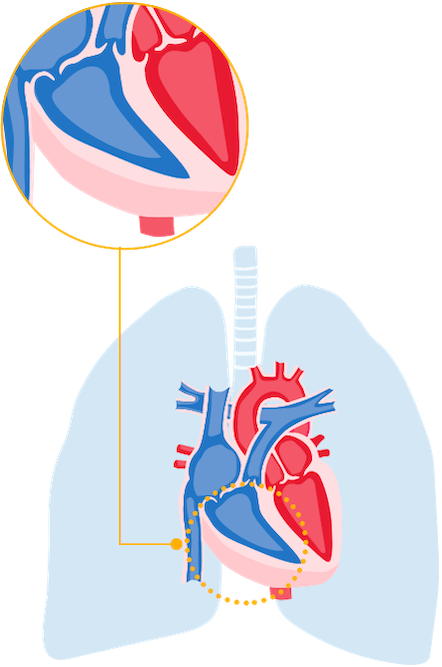PAH: Scleroderma and Its Effect on Your Lungs
- Systemic sclerosis is not just a skin condition. It can also cause serious lung problems such as pulmonary arterial hypertension, or PAH for short
- PAH is a disease of high blood pressure in the lungs. It can happen in people with different connective tissue diseases, but PAH is most common in people with scleroderma
- Although scleroderma and PAH are 2 separate conditions, inflammation may play an important role in both. Scleroderma can cause inflammation, which may then increase your chances of developing PAH
Signs and Symptoms of PAH
Noticeable signs of PAH may start out mild but can get worse over time. They include:
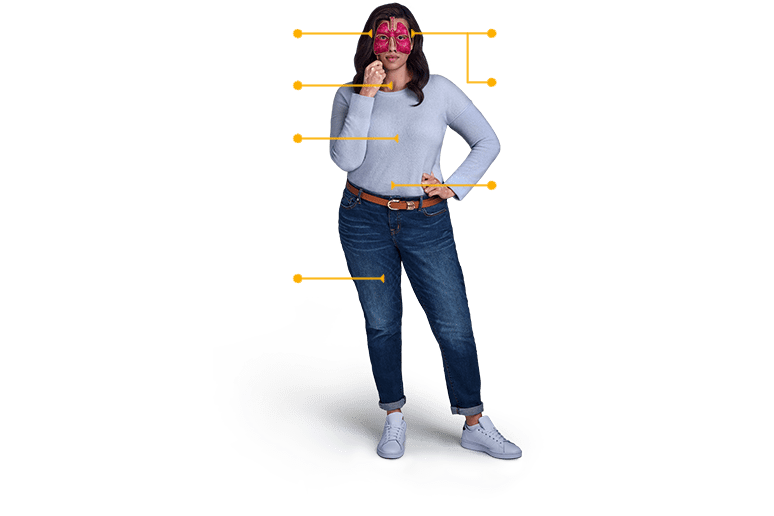
Light-headedness
Shortness of breath
Chest pain
Swelling of the ankles or
legs (also called edema)
Fainting
Constant tiredness
Swelling of the abdomen
(also called edema)
(also called edema)
(also called edema)
Some signs of PAH are hidden, so you may not see or feel them
Blood work, lung function tests, or an ultrasound of your heart can show signs of PAH and the need for diagnostic testing.
Track how you are feeling
Are changes in how you feel being caused by scleroderma, PAH associated with scleroderma, or something else?
It can be difficult to tell, but tracking how you feel every day can help you discuss your health with your healthcare team.

Take Charge of Your Health
If you have scleroderma, experts recommend yearly screening for PAH.*
See moreHave Questions About PAH?
See some of the most commonly asked questions about scleroderma and PAH.
Find answers*Recommendations for yearly PAH screening of people with systemic sclerosis are included in the 2022 European Society of Cardiology/European Respiratory Society Guidelines.

